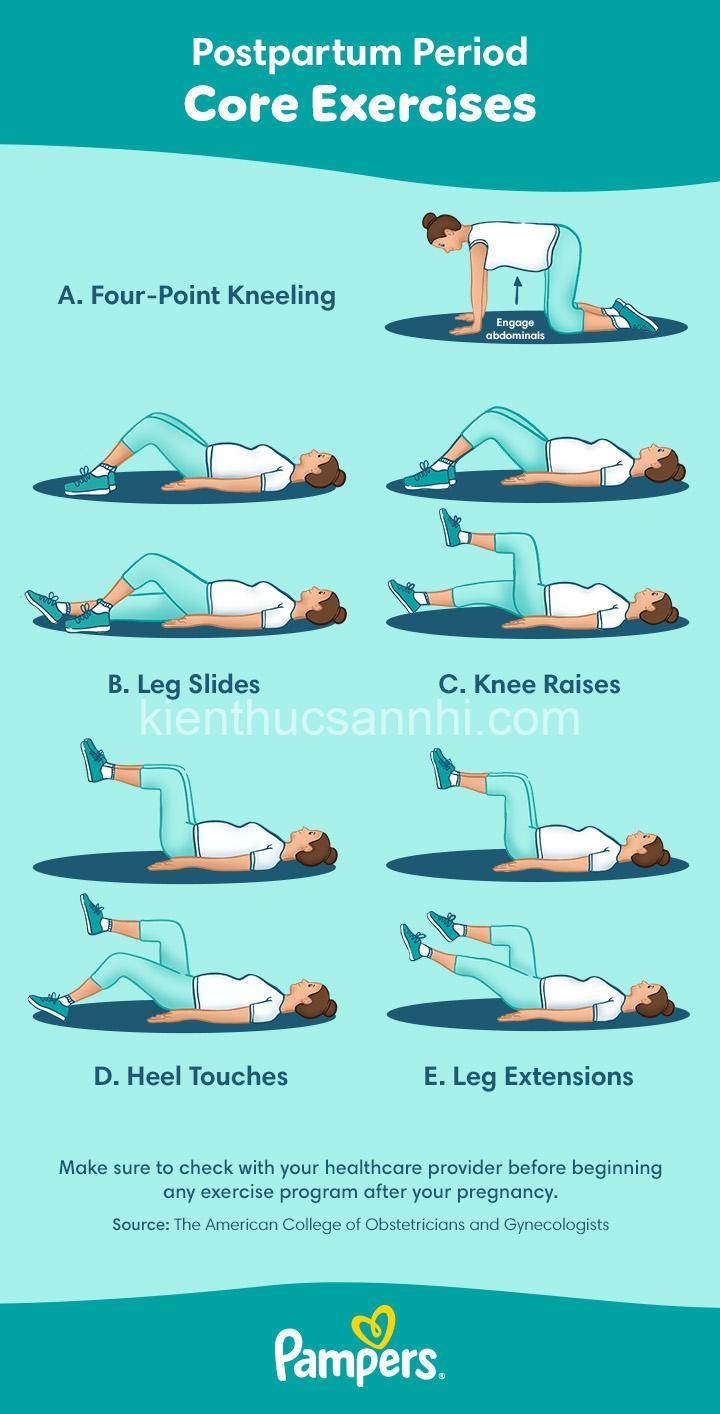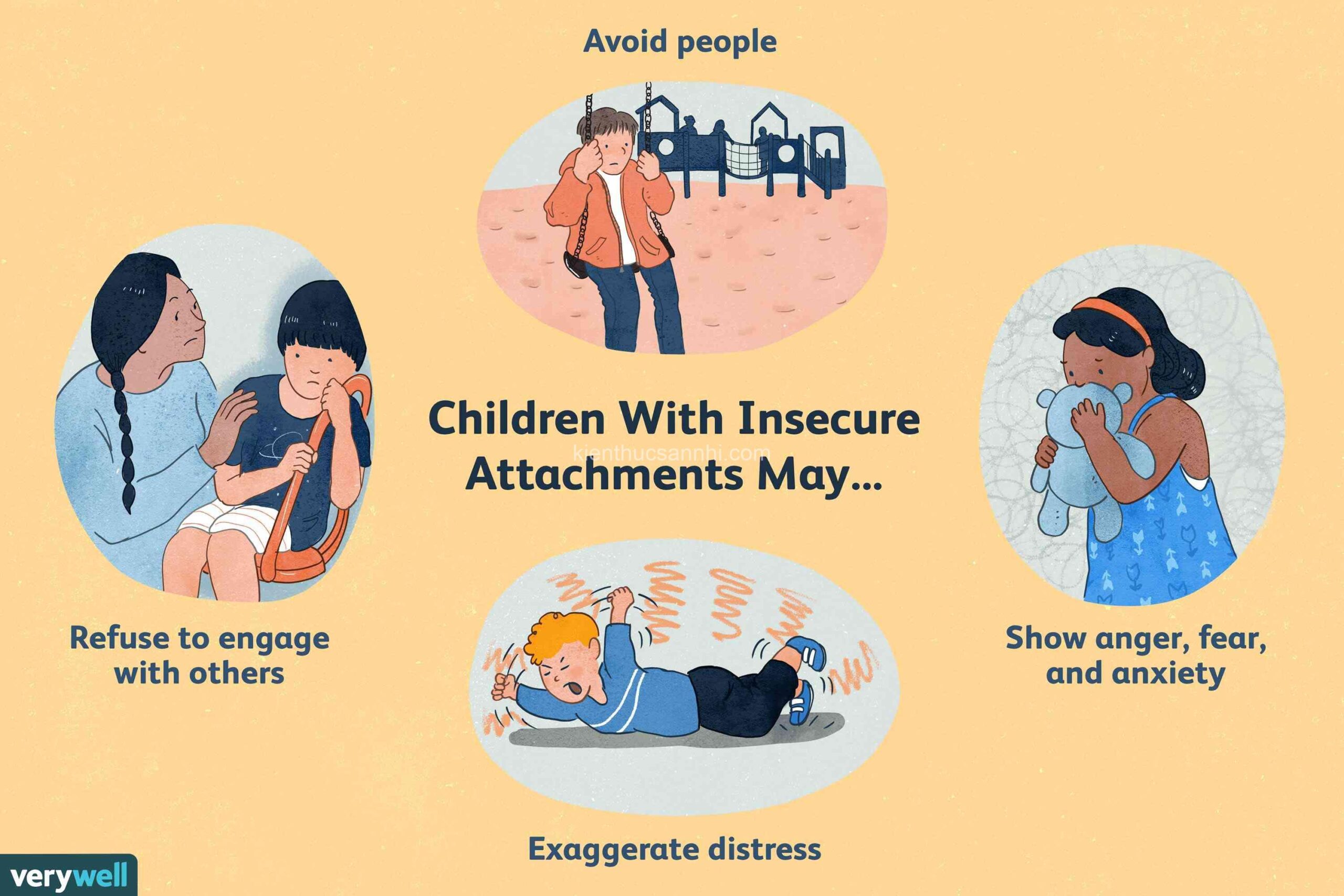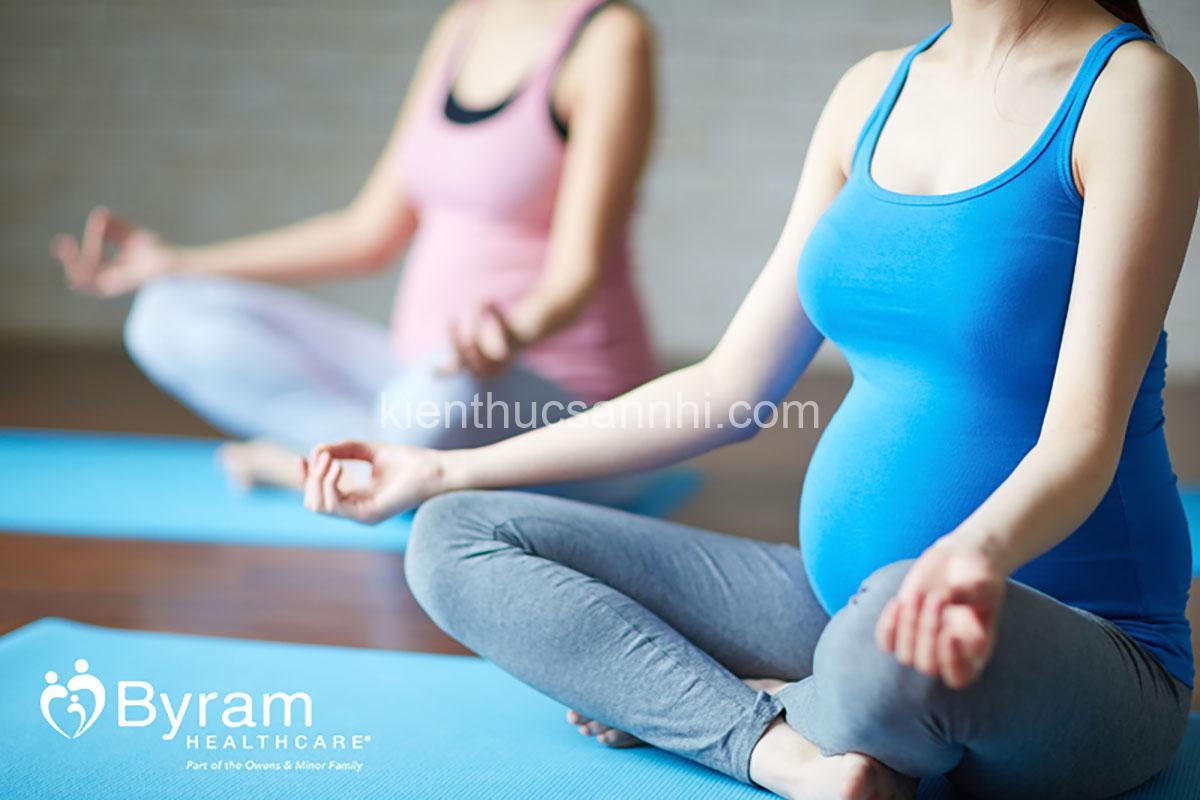
Postpartum Exercise Classes: Benefits, Choosing the Right One & More. In today’s article, kienthucsannhi.com will explore with you in the most detailed and complete way. See now!
The Benefits of Postpartum Exercise Classes
Postpartum exercise classes offer a range of benefits that extend beyond physical fitness. Here are some key advantages:

Physical Benefits
- Improved strength, endurance, and flexibility: Classes help you rebuild muscle strength, increase stamina, and improve your range of motion, which can be particularly beneficial after pregnancy.
- Weight loss and muscle building: Postpartum exercise can assist with weight management and help you regain muscle mass lost during pregnancy.
- Reduced risk of chronic diseases: Regular exercise can help prevent heart disease, stroke, type 2 diabetes, and some types of cancer.
- Enhanced mood and energy levels: Exercise releases endorphins, which have mood-boosting effects and can help combat postpartum fatigue.
Emotional Benefits
- Improved self-esteem and confidence: As you regain your strength and fitness, you’ll likely feel a boost in self-esteem and confidence, which can be empowering after the changes of pregnancy and childbirth.
- Stress relief and improved mental well-being: Exercise is a powerful stress reliever, and classes can provide a welcome escape from the demands of motherhood.
- Connection with other new mothers: Postpartum exercise classes offer a chance to connect with other women who are going through similar experiences, providing support and camaraderie.
- Increased sense of accomplishment and empowerment: Achieving your fitness goals can give you a sense of accomplishment and empower you to take care of yourself.
Choosing the Right Postpartum Exercise Class
Finding the right postpartum exercise class is crucial for a safe and enjoyable experience.
Consider Your Individual Needs
- Physical fitness level before and during pregnancy: Be honest with yourself about your current fitness level and any limitations you may have.
- Any specific health concerns or limitations: Discuss any health conditions or injuries with your doctor before starting a class.
- Baby’s age and sleep schedule: Choose a class that fits your baby’s age and sleep schedule, making sure you have childcare arrangements if needed.
- Personal preferences and goals: Think about your goals, whether it’s building strength, improving flexibility, or simply moving your body.
Factors to Look for in a Class
- Qualified and experienced instructor with postpartum expertise: Look for an instructor who is certified and experienced in working with postpartum women. They should understand the unique needs and challenges of this stage.
- Small class size for individual attention and support: A smaller class size allows the instructor to provide personalized attention and support, ensuring proper form and modifications.
- Safe and welcoming environment: A welcoming and supportive environment is essential for feeling comfortable and motivated to exercise.
- Modifications offered for varying fitness levels: The class should offer modifications so that everyone can participate at their own pace and ability.
- Focus on core strength, pelvic floor health, and safe return to exercise: Postpartum exercise classes should prioritize strengthening your core muscles, supporting pelvic floor health, and helping you return to exercise safely.
Resources for Finding Classes
- Local gyms and fitness studios: Many gyms and fitness studios offer postpartum exercise classes. Check with local studios or search online for postpartum exercise classes in your area.
- Online directories: Online directories like “Find a Class” or “ClassPass” often list postpartum fitness classes.
- Recommendations from healthcare providers: Ask your doctor, midwife, or other healthcare provider for recommendations.
Important Considerations Before Starting a Postpartum Exercise Class
It’s essential to take precautions and listen to your body before and during postpartum exercise classes.
Consult with Your Doctor
- Get clearance for physical activity and specific exercises: It’s important to get medical clearance before starting any new exercise program, especially after pregnancy.
- Discuss any limitations or precautions: Share any health concerns or limitations with your doctor. They can provide personalized advice on what exercises are safe for you.
Listen to Your Body
- Start slowly and gradually increase intensity: Don’t overdo it initially. Start with low-intensity exercises and gradually increase the duration and intensity as your body recovers.
- Stop if you experience pain or discomfort: Listen to your body’s signals. If you experience any pain or discomfort, stop the exercise and consult with your instructor or doctor.
- Avoid pushing yourself too hard too soon: Give yourself time to heal and rebuild your strength. Avoid pushing yourself beyond your limits, as this can lead to injury.
Make Time for Recovery
- Prioritize sleep and rest: Postpartum recovery requires adequate rest. Prioritize sleep and rest to allow your body to heal and recover.
- Stay hydrated: Drink plenty of water to stay hydrated, especially during and after exercise.
- Allow for sufficient recovery time between workouts: Give your body time to rest and recover between exercise sessions. Avoid overtraining, which can lead to fatigue and injury.
Types of Postpartum Exercise Classes
There are various types of postpartum exercise classes available to suit different fitness levels and goals.
Gentle & Low-Impact Classes
- Yoga (prenatal & postnatal modifications): Postpartum yoga classes incorporate modifications to address the changes in your body after childbirth. Yoga can help improve flexibility, core strength, and relaxation.
- Pilates: Pilates focuses on core strength, flexibility, and body awareness. It’s a great option for strengthening your core muscles and improving posture.
- Barre: Barre classes combine elements of ballet, yoga, and Pilates to tone and sculpt your muscles.
- Aqua Fitness: Aqua fitness classes are held in a pool, reducing impact on your joints and providing a gentle workout.
- Walking Groups: Walking groups are a great option for a low-impact, social way to get active.
Strength Training Classes
- Postpartum Boot Camps: Boot camps offer a high-intensity, interval-training workout that combines strength training and cardio.
- Weight Lifting: Weightlifting is a great way to build muscle strength and improve bone density.
- Circuit Training: Circuit training combines different exercises with short rest periods, providing a challenging and effective workout.
Specialized Classes
- Diastasis Recti Recovery Classes: These classes focus on exercises to help close the gap between your abdominal muscles, a common condition after pregnancy.
- Pelvic Floor Strengthening Classes: These classes help strengthen the pelvic floor muscles, which can be weakened after pregnancy.
- Breastfeeding-Friendly Classes: These classes are designed for mothers who are breastfeeding, with exercises and modifications that accommodate breastfeeding needs.
Tips for Success in Postpartum Exercise Classes
Following these tips can enhance your experience and help you achieve your fitness goals.
Find a Class That Fits Your Lifestyle
- Choose a class that fits your schedule and childcare arrangements: Select a class that works with your schedule and allows for reliable childcare, if needed.
- Consider the class location and proximity to home: Choose a class that is conveniently located near your home or work to make it easier to attend.
Start Slowly and Progress Gradually
- Listen to your body and don’t be afraid to modify exercises: Be mindful of your body’s signals and don’t hesitate to modify exercises if needed.
- Ask your instructor for help and guidance: Don’t be afraid to ask the instructor for advice and support. They can offer modifications and ensure you’re exercising safely.
Be Patient and Consistent
- Postpartum recovery takes time: Remember that postpartum recovery is a journey. It takes time to regain strength and fitness.
- Focus on making healthy choices and building sustainable habits: Focus on making healthy choices and building sustainable exercise habits for the long term.
Common Concerns and Solutions
Here are some common concerns and solutions related to postpartum exercise classes.
Diastasis Recti
Diastasis recti is a separation of the abdominal muscles that can occur after pregnancy. Postpartum exercise classes should address diastasis recti with modifications and exercises specifically designed for recovery.
Pelvic Floor Health
The pelvic floor muscles can weaken after pregnancy. Postpartum exercise classes should incorporate exercises to strengthen the pelvic floor muscles, which are essential for bladder control and overall pelvic health.
Breastfeeding and Exercise
Breastfeeding mothers can participate in postpartum exercise classes. Choose classes that are breastfeeding-friendly, with breaks for breastfeeding and modifications to accommodate breastfeeding needs.
Fatigue and Sleep Deprivation
Postpartum fatigue and sleep deprivation are common. Listen to your body, and if you’re feeling exhausted, take breaks and prioritize rest.
Resources and Additional Information
Here are some resources to help you find postpartum exercise classes and learn more about postpartum fitness:
Websites and Organizations:
- American College of Obstetricians and Gynecologists (ACOG): ACOG provides comprehensive information about postpartum care, including exercise recommendations.
- American Council on Exercise (ACE): ACE offers certifications for personal trainers and provides resources for finding certified trainers.
- Postpartum Support International (PSI): PSI provides support and resources for postpartum mothers.
Books and Articles:
- “The Expectant Mother’s Guide to Exercise” by James Clapp: This book provides detailed guidance on exercise during pregnancy and postpartum.
- “The Postpartum Body: A Guide to Recovering Your Strength and Fitness” by Emily Skye: This book offers a comprehensive approach to postpartum fitness.
Healthcare Providers:
Consult with your doctor, midwife, or other healthcare providers for personalized advice and recommendations. They can help you find appropriate postpartum exercise classes and guide you through your recovery.
Conclusion
Postpartum exercise classes offer a valuable opportunity for new mothers to regain strength, improve mood, and reconnect with their bodies.
By choosing the right class and following these tips, you can enjoy the many benefits of postpartum exercise. For more valuable information about the process of raising or the best pet products, visit kienthucsannhi.com.
Please share your thoughts, questions, and experiences in the comments below. And don’t forget to check out our other articles on animal care and pet products at [link to kienthucsannhi.com]
All Semantic Keywords
- Postpartum exercise
- Postpartum recovery
- Fitness classes
- Exercise safety
- New mothers
- Physical activity
- Diastasis recti
- Pelvic floor
- Core strength
All EAVs
- Class – Type – Yoga, Pilates, Strength Training, Aqua Fitness
- Instructor – Qualification – Certified Personal Trainer, Postpartum Specialist
- Class – Location – Gym, Studio, Online
- Class – Time – Morning, Afternoon, Evening
- Class – Cost – Free, Affordable, Premium
- New Mother – Fitness Level – Beginner, Intermediate, Advanced
- Exercise – Benefit – Strength, Flexibility, Weight Loss
- Postpartum – Condition – Diastasis recti, Pelvic floor weakness
- Class – Modification – Low impact, Modified exercises
- Class – Size – Small, Medium, Large
- New Mother – Goal – Strength, Weight loss, Diastasis recti recovery
- Class – Focus – Core, Pelvic floor, Cardio
- Instructor – Experience – Years of experience, Postpartum specialization
- Class – Environment – Welcoming, Supportive, Safe
- Class – Age Requirement – For all ages, For specific age groups
- New Mother – Baby Age – Newborn, Infant, Toddler
- Exercise – Intensity – Low, Moderate, High
- Class – Frequency – Once a week, Twice a week, Multiple times a week
- New Mother – Time Commitment – Flexible, Specific time slots
- Class – Availability – Limited spots, Open enrollment
All EREs
- Postpartum exercise class, OFFERED BY, Instructor
- New mother, ATTENDS, Postpartum exercise class
- Postpartum exercise class, HAS, Benefits
- Postpartum exercise class, REQUIRES, Specific fitness level
- Postpartum exercise class, ADDRESSES, Postpartum conditions
- Postpartum exercise class, FOCUSES ON, Specific body areas
- Postpartum exercise class, PROVIDES, Modifications
- Postpartum exercise class, OFFERS, Support and community
- Instructor, SPECIALIZES IN, Postpartum fitness
- Instructor, PROVIDES, Personalized guidance
- New mother, BENEFITS FROM, Exercise
- New mother, EXPERIENCES, Improved physical health
- New mother, EXPERIENCES, Enhanced mental well-being
- New mother, RECOVERS, From childbirth
- New mother, STRENGTHENS, Core muscles
- New mother, IMPROVES, Pelvic floor health
- New mother, BUILDS, Confidence and self-esteem
- New mother, FINDS, Connection with other mothers
- New mother, ENGAGES IN, Healthy lifestyle choices
- New mother, ACHIEVES, Fitness goals
All Semantic Triples
- Postpartum exercise class, IS A TYPE OF, Fitness class
- Postpartum exercise class, IS DESIGNED FOR, New mothers
- Postpartum exercise class, FOCUSES ON, Safe and effective exercise
- Postpartum exercise class, PROVIDES, Support and guidance
- Postpartum exercise class, CAN HELP, With postpartum recovery
- Postpartum exercise class, CAN IMPROVE, Physical and mental health
- Postpartum exercise class, CAN STRENGTHEN, Core muscles
- Postpartum exercise class, CAN HELP, With diastasis recti recovery
- Postpartum exercise class, CAN BOOST, Energy levels
- Postpartum exercise class, CAN REDUCE, Stress levels
- Postpartum exercise class, CAN FOSTER, Connection with other mothers
- Instructor, HAS, Knowledge and experience
- Instructor, IS ABLE TO, Modify exercises
- Instructor, PROVIDES, Individual attention
- New mother, BENEFITS FROM, Postpartum exercise class
- New mother, ACHIEVES, Fitness goals
- New mother, EXPERIENCES, Improved body image
- New mother, INCREASES, Confidence and self-esteem
- New mother, FEELS, More energetic and motivated
- New mother, BECOMES, Part of a supportive community





